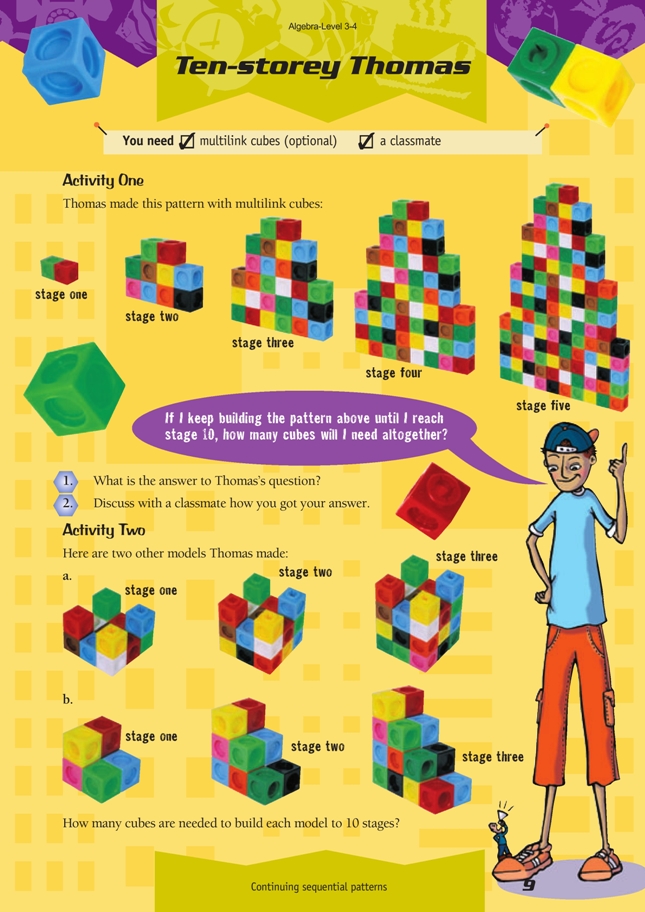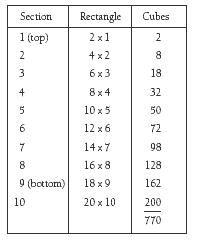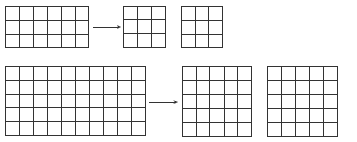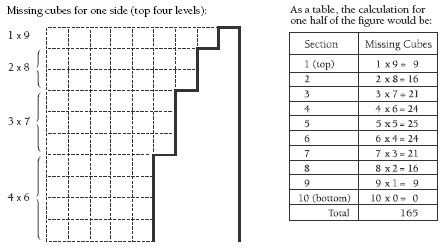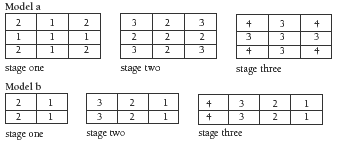This is a level 3 algebra strand activity from the Figure It Out series.
A PDF of the student activity is included.
Click on the image to enlarge it. Click again to close. Download PDF (316 KB)
continue a sequential pattern
FIO, Level 3-4, Algebra, Ten-storey Thomas, page 9
a classmate
Activity One
Thomas was a 9-year-old student from Silverdale Normal School in Hamilton when he created this delightful pattern using multilink cubes. His teacher challenged him to find the total number of cubes in stage 10 of his model.
He chose to focus on the rectangles that make up the sections of the model. This is a worthwhile strategy, but the students will need to organise their calculations carefully.
The Answers also suggest using square numbers because each rectangular section is made up of a square number times two. For example, 6 x 3 is made of (3 x 3) + (3 x 3) and 10 x 5 is (5 x 5) + (5 x 5).
This approach uses the reflection symmetry of the figure.
.gif)
Another strategy is to focus on the rectangle that surrounds the whole figure and subtract the missing cubes. The students could do this by working with one side of the figure and doubling the result.
The rectangle that surrounds half of stage 10 of the model is 10 cubes across and 55 cubes high, which gives a total of 550 cubes. The missing cubes for one side are given by:
(1 x 9) + (2 x 8) + (3 x 7) + (4 x 6) + (5 x 5) + (6 x 4) + (7 x 3) + (8 x 2) + (9 x 1)
= 9 + 16 + 21 + 24 + 25 + 24 + 21 + 16 + 9
= 165.
550 – 165 = 385 gives the total number of cubes for one side.
Activity Two
A possible strategy for solving these problems is to draw a bird’s-eye view of each figure at its different stages. The numbers show how many cubes are used on each tower.
These diagrams help the students to see the number patterns in the models. Using the number patterns, the tenth stage of each model is:

Answers to Activities
Activity One
1. 770
2. Two possible ways are:
- Start by using multiplication to count the cubes in each section. The five sectionsshown in stage five of the building are 1 x 2, 2 x 4, 3 x 6, 4 x 8, and 5 x 10.From this, you can see a pattern, which will give you 6 x 12, 7 x 14, 8 x 16, 9 x 18, and 10 x 20. The answers to all these add up to 770.
- Another way is to use square numbers. If you divide the fifth stage in half vertically, you can see that each section is a square number (12, 22, 32, 42, 52). This pattern continued to 102 gives a total of 385. Double this to get both sides, and you get 770.
Activity Two
a. 94
b. 132
